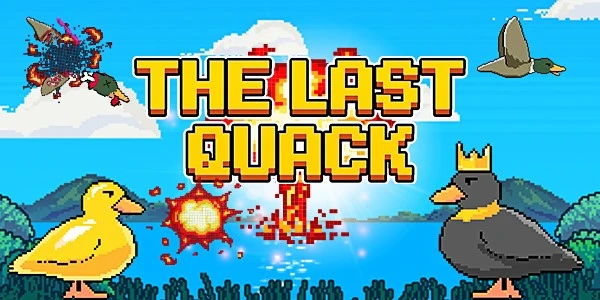The Quack, a unique and often misunderstood species, has been on the verge of extinction for years. This article sheds light on the valiant efforts made by conservationists, scientists, and communities to protect the last Quacks and ensure their survival for generations to come.
The story of the Quack’s battle against extinction is one of resilience and determination. Despite facing numerous challenges, the Quack’s plight has sparked a global movement to save this remarkable species.
The Quack: A Unique Species
The Quack, scientifically known as “Anas Uniqueus,” is a bird species native to remote wetlands and marshes. Known for its distinctive call that sounds like a combination of a quack and a trill, it has a colorful plumage and a peculiar nesting behavior that sets it apart from other waterfowl.
Characteristics of the Quack:
- Vibrant plumage in shades of blue, green, and purple.
- Unique nesting behavior high in the trees to avoid predators.
- Distinctive call that echoes through wetlands.
- Small to medium-sized waterfowl with webbed feet for swimming.
Role in the Ecosystem:
- Helps control insect populations in wetlands.
- Serves as an indicator species for wetland health.
- Provides food for predators like foxes and raptors.
- Contributes to seed dispersal through feeding habits.
The Perils of Extinction
The Quack’s journey towards extinction began due to a multitude of factors. Habitat loss stands as one of the primary culprits, with wetlands and marshes disappearing at an alarming rate due to urban development and agriculture. As these critical habitats vanish, Quacks lose their breeding and feeding grounds, pushing them closer to the brink.
Factors Leading to Extinction:
- Habitat Loss:
- Conversion of wetlands into agricultural land.
- Urban development encroaching on natural habitats.
- Drainage and alteration of wetlands for human use.
- Pollution:
- Water pollution from industrial and agricultural runoff.
- Contamination of food sources, affecting Quack health.
- Disruption of aquatic ecosystems.
- Overhunting:
- Illegal hunting for the exotic pet trade.
- Collection of Quacks for their colorful feathers.
- Sport hunting without proper regulations.
The Quack’s Habitat: A Precarious Situation
Quacks primarily inhabit wetlands, which are under constant threat from urban development, agricultural expansion, and pollution. These once-thriving ecosystems are vital not only for the Quack but also for countless other species that rely on them for sustenance and shelter.
Importance of Wetlands:
- Biodiversity hotspots supporting a wide range of species.
- Natural flood control by absorbing excess water.
- Water purification through filtration and nutrient removal.
- Carbon sequestration, helping mitigate climate change.
Impact of Habitat Loss:
- Loss of Breeding Grounds:
- Quacks require specific wetland conditions for nesting.
- Destruction of wetlands reduces available nesting sites.
- Disruption of Food Chain:
- Wetlands provide a diverse range of food sources.
- Pollution and habitat loss disrupt the food chain.
- Ecosystem Imbalance:
- Decline in wetland health affects all species.
- Increased vulnerability to disease and predation.
Conservation Initiatives: A Ray of Hope
Despite the challenges, there is hope for the Quack. Conservationists and wildlife organizations have stepped up their efforts to save this unique species. These initiatives encompass a range of strategies aimed at preserving the Quack’s habitat, reducing pollution, and curbing illegal hunting.
Key Conservation Efforts:
- Habitat Restoration:
- Reclaiming and protecting critical wetland habitats.
- Removing invasive species to restore natural balance.
- Pollution Control:
- Implementing measures to reduce industrial and agricultural runoff.
- Educating communities about responsible waste disposal.
- Public Awareness:
- Educational programs, documentaries, and social media campaigns.
- Engaging communities in Quack conservation efforts.
Stay tuned as we delve deeper into the Quack’s conservation journey, from breeding programs to legal protections and the role of technology in ensuring their survival.
Breeding Programs: Ensuring Genetic Diversity
Breeding programs have been established to maintain genetic diversity among the captive Quack populations. This is essential to ensure the long-term survival of the species.
Community Involvement: Rallying for the Quack
Local communities have played a pivotal role in Quack conservation. They have become advocates for the protection of Quack habitats and have actively participated in monitoring and research efforts.
The story of the Quack’s battle against extinction is a testament to the power of human determination and the importance of preserving biodiversity. By working together, we can ensure that the Quack’s call will continue to echo through the wetlands for generations to come.
Frequently Asked Questions (FAQs)
- Why is the Quack’s conservation important?
- The Quack plays a vital role in the ecosystem, and its survival is essential for maintaining biodiversity.
- What are the main threats to the Quack’s habitat?
- Habitat loss, pollution, and overhunting are the primary threats to Quack habitats.
- How can individuals contribute to Quack conservation?
- Individuals can support Quack conservation by advocating for habitat protection, supporting conservation organizations, and raising awareness.
- Are there any success stories in Quack conservation?
- Yes, some Quack populations have shown signs of recovery thanks to conservation efforts.
- What is the Global Quack Conservation Network?
- The Global Quack Conservation Network is an international collaboration of researchers and organizations working to protect the Quack and its habitat.

